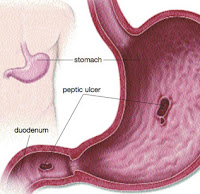It can be a worrying experience if your child has bleeding from nose (epistaxis). However, most of the time the nose bleeding is not caused by serious problems.
Nose bleeding usually occurs on one side of the nostril. It is commonly due to injury to the inner lining (mucosa) of the front part of the nose, such as:
- nose picking (esp with sharp fingernails)
- nose blowing & rubbing
- nose inflammation / infection
- foreign body in the nose
- nose trauma (eg. from a blow on the face)
The bleeding point is most likely at the front part of the nose septum (Little's area) where the blood vessels are most abundant. You may see this area if the nose bleeding is not too profuse.
Little's area
When the bleeding occur, sit the child upright and tilt his/her head forward to prevent the blood from flowing backwards into the mouth. Then pinch the nose with your thumb and index finger for at least 5-10 minutes to compress the bleeding point at Little's area. If the bleeding does not stop and you are worry, it is wise to bring your child to a doctor.
Nose bleeding can be recurrent, especially in children with underlying allergic condition such as allergic rhinitis. Besides, dry air or dry weather can cause nasal mucosa irritation and increase the chance of nose bleeding.
Very rarely, nose bleeding in children can be caused by more serious disorders especially when:
- there are bleeding elsewhere other than the nose (gum bleeding, bruises, bloody stool etc)
- the bleeding does not stop or takes a longer than usual time to stop
- very frequent nose bleeding episodes
A few more serious causes of nose bleeding in children include:
- blood coagulation disorder (congenital or acquired)
- low or abnormal platelet function
- blood cancer (leukemia etc)
- nose tumour
Nose bleeding in children is usually harmless. If you are in doubt, please consult your doctor for confirmation.



















